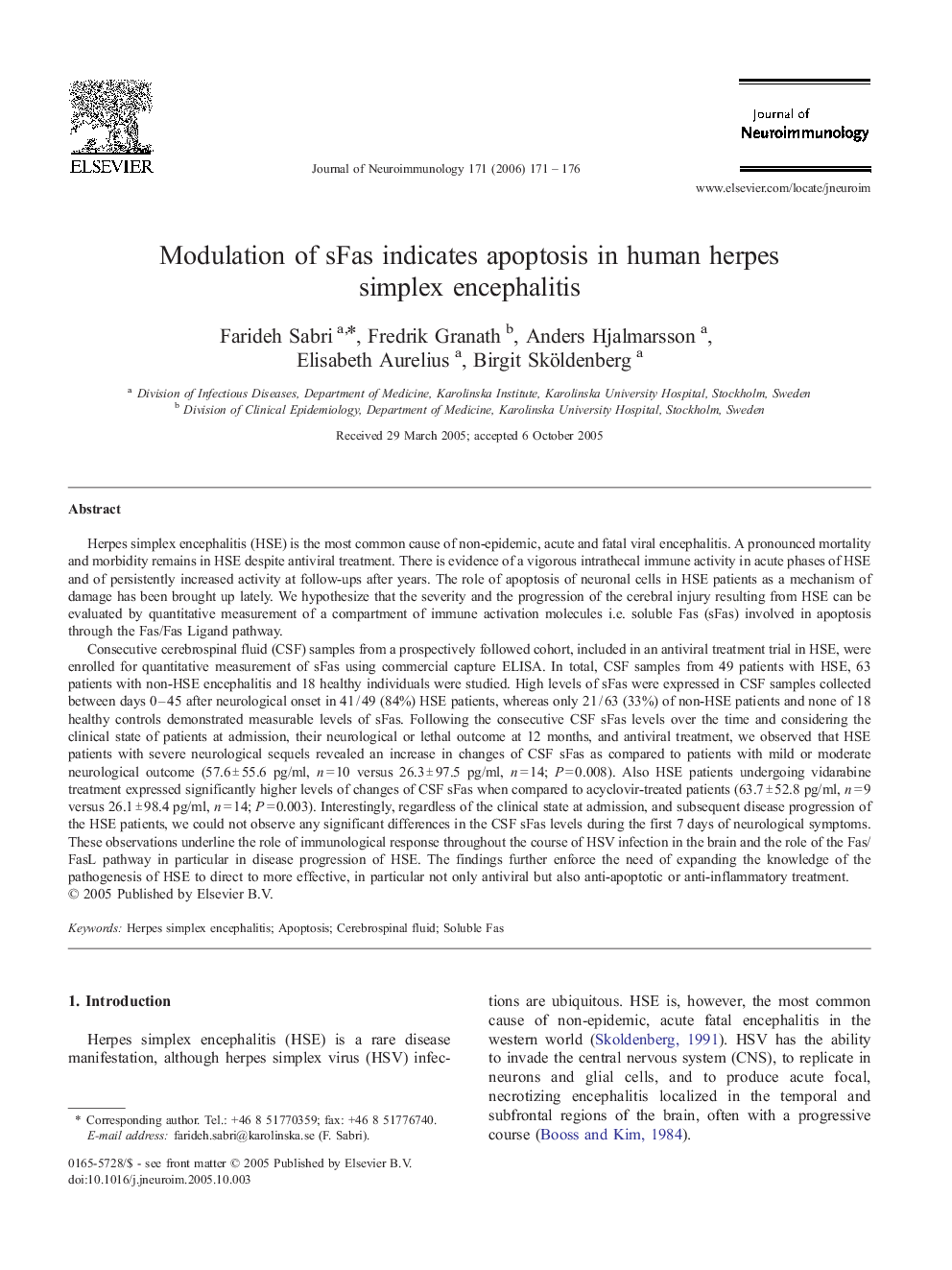| کد مقاله | کد نشریه | سال انتشار | مقاله انگلیسی | نسخه تمام متن |
|---|---|---|---|---|
| 3066147 | 1580499 | 2006 | 6 صفحه PDF | دانلود رایگان |

Herpes simplex encephalitis (HSE) is the most common cause of non-epidemic, acute and fatal viral encephalitis. A pronounced mortality and morbidity remains in HSE despite antiviral treatment. There is evidence of a vigorous intrathecal immune activity in acute phases of HSE and of persistently increased activity at follow-ups after years. The role of apoptosis of neuronal cells in HSE patients as a mechanism of damage has been brought up lately. We hypothesize that the severity and the progression of the cerebral injury resulting from HSE can be evaluated by quantitative measurement of a compartment of immune activation molecules i.e. soluble Fas (sFas) involved in apoptosis through the Fas/Fas Ligand pathway.Consecutive cerebrospinal fluid (CSF) samples from a prospectively followed cohort, included in an antiviral treatment trial in HSE, were enrolled for quantitative measurement of sFas using commercial capture ELISA. In total, CSF samples from 49 patients with HSE, 63 patients with non-HSE encephalitis and 18 healthy individuals were studied. High levels of sFas were expressed in CSF samples collected between days 0–45 after neurological onset in 41 / 49 (84%) HSE patients, whereas only 21 / 63 (33%) of non-HSE patients and none of 18 healthy controls demonstrated measurable levels of sFas. Following the consecutive CSF sFas levels over the time and considering the clinical state of patients at admission, their neurological or lethal outcome at 12 months, and antiviral treatment, we observed that HSE patients with severe neurological sequels revealed an increase in changes of CSF sFas as compared to patients with mild or moderate neurological outcome (57.6 ± 55.6 pg/ml, n = 10 versus 26.3 ± 97.5 pg/ml, n = 14; P = 0.008). Also HSE patients undergoing vidarabine treatment expressed significantly higher levels of changes of CSF sFas when compared to acyclovir-treated patients (63.7 ± 52.8 pg/ml, n = 9 versus 26.1 ± 98.4 pg/ml, n = 14; P = 0.003). Interestingly, regardless of the clinical state at admission, and subsequent disease progression of the HSE patients, we could not observe any significant differences in the CSF sFas levels during the first 7 days of neurological symptoms. These observations underline the role of immunological response throughout the course of HSV infection in the brain and the role of the Fas/FasL pathway in particular in disease progression of HSE. The findings further enforce the need of expanding the knowledge of the pathogenesis of HSE to direct to more effective, in particular not only antiviral but also anti-apoptotic or anti-inflammatory treatment.
Journal: Journal of Neuroimmunology - Volume 171, Issues 1–2, February 2006, Pages 171–176